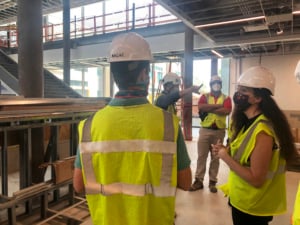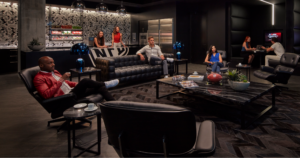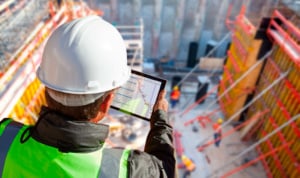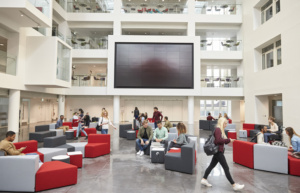Technology, Paul McCartney, the Pandemic, and Pushing Forward

In 1973, Paul McCartney’s smash theme “Live and Let Die” topped the charts, was nominated for an Academy Award, and left Bond film junkies around the world with the perfect excuse to crank their car stereos to max volume. The song’s tense transitions between innocence, optimism, pessimism, and practicality might make it a contender for musical anthem of 2020. One line we can probably all relate to is: “When ya got a job to do, ya got to do it well.”
And there has been no more pressing force to do our jobs well than during the COVID-19 pandemic. Mediocre and status-quo are not acceptable; we have to face our challenges with grit, character, and a double-shot of belief that together we can win. The pandemic has forced us all to adapt our work to new norms, methods, and tools. Web meetings and conference calls fill our days like never before. Names like “Zoom” and “Teams” have become verbs as we describe how each day has been sliced and diced into one web meeting after another. Even our kids spend their days switching between online classrooms, virtual music lessons, video cooking classes, and video chats with friends.
It is interesting to note that the new norm was not made possible by a brand-new innovative technology. There is nothing inherently cutting edge about web meetings and working remotely. In fact, the pandemic has simply forced us to use “older” technologies in new and more expansive ways. What might be the most impressive innovation has been the speed with which many organizations shifted day-to-day operations into a new remote context. For most, they accomplished this major transition using existing technologies. But, most of these endeavors were hastily implemented to address the demands of today, with precious little thought about scalability or reliability. What happens tomorrow? What about next month and next year?
 The burning question is: where do we go from here? And how can the implications of the pandemic enable us to better leverage existing systems, today’s infrastructures, and future technology deployments. As project and program managers, we have already begun to answer this question from the perspectives of technical standards, systems, budgets, and operational impacts. The work has barely begun during these past months, but our clients are pressed for answers as they rapidly adjust their business plans, facility master plans, design projects, capital budgets, and operating expenses. For those clients that are finishing design or already in construction, an accelerated process of aggressive and creative “rethinkering” is underway.
The burning question is: where do we go from here? And how can the implications of the pandemic enable us to better leverage existing systems, today’s infrastructures, and future technology deployments. As project and program managers, we have already begun to answer this question from the perspectives of technical standards, systems, budgets, and operational impacts. The work has barely begun during these past months, but our clients are pressed for answers as they rapidly adjust their business plans, facility master plans, design projects, capital budgets, and operating expenses. For those clients that are finishing design or already in construction, an accelerated process of aggressive and creative “rethinkering” is underway.
Amidst the crisis, some industries have seen years of planned innovation suddenly unfold in a matter of weeks. One of our healthcare clients saw their occasional use of telemedicine surge from several hundred engagements per month to several thousand per week. Another organization leveraged their asset tracking system to track which equipment and personnel had come into proximity with patients recently diagnosed with COVID-19. Elsewhere, clients leveraged Wi-Fi to expand their patient waiting rooms to include the parking garage. This allowed patients to socially distance inside their personal vehicles while checking-in and waiting to be called inside for their appointments.
COVID-19 has imposed a devastating reality for colleges and universities: students cannot reliably and safely participate in the campus experience (for now). Remote learning has been the go-to alternative thus far, but remains an inferior option for a wide variety of educational and collaborative activities. Students (and their parents) are now thrust into a cost / benefit analysis that has led many to take the Fall semester off as they evaluate their options. Institutions are now forced to address a crisis that will permanently alter their business and educational models. Granted, some of these body blows are temporary until a vaccine or other countermeasures can be delivered. But, the reality is that some combination of remote participation and periodic in-person collaboration has been trending in higher education for a decade. The challenges of 2020 have simply accelerated the change and institutions that do not adapt their value proposition, educational processes, and platforms face future challenges.
 As an industry, we need to start by shifting technology from a late-project afterthought to strategic enabler. The traditional timing and approach for estimating, scoping, delivering, and managing these dozens of systems, platforms, and infrastructures is inadequate. Rather than tucking individual systems deep underneath a handful of consultants and contractors, the technology program must be developed, managed, and delivered on its own merits. Rather than incorporating technology after the space program and floor plans are largely complete, we must consider how technology can enable us to update our aged assumptions. Top of mind samples include potential square footage reductions driven by employee timesharing, efficiencies in classroom space due to remote participation, shifts to support space needs driven by autonomous robotic delivery, and the list goes on.
As an industry, we need to start by shifting technology from a late-project afterthought to strategic enabler. The traditional timing and approach for estimating, scoping, delivering, and managing these dozens of systems, platforms, and infrastructures is inadequate. Rather than tucking individual systems deep underneath a handful of consultants and contractors, the technology program must be developed, managed, and delivered on its own merits. Rather than incorporating technology after the space program and floor plans are largely complete, we must consider how technology can enable us to update our aged assumptions. Top of mind samples include potential square footage reductions driven by employee timesharing, efficiencies in classroom space due to remote participation, shifts to support space needs driven by autonomous robotic delivery, and the list goes on.
With compliments to our architectural partners, the role of an “architect” is what’s needed. But, a different type of architect. An enterprise architect with the perspective, expertise, not to mention breadth and depth of knowledge to deliver a cohesive and focused technology project. A specialized technology program management team that can envision and deliver a system-of-systems that serves today’s business needs, while supporting the strategic needs of the future. Every organization, institution, and project is demanding more from its technology platforms. To borrow from Clemenceau who said, “war is too important to be left to the generals,” the continued viability of our institutions will rely in great part on the capability and flexibility of their technology platforms. It is too important to be squeezed into the last five minutes of project coordination meetings. It is too important to be the budget that is raided for savings.








